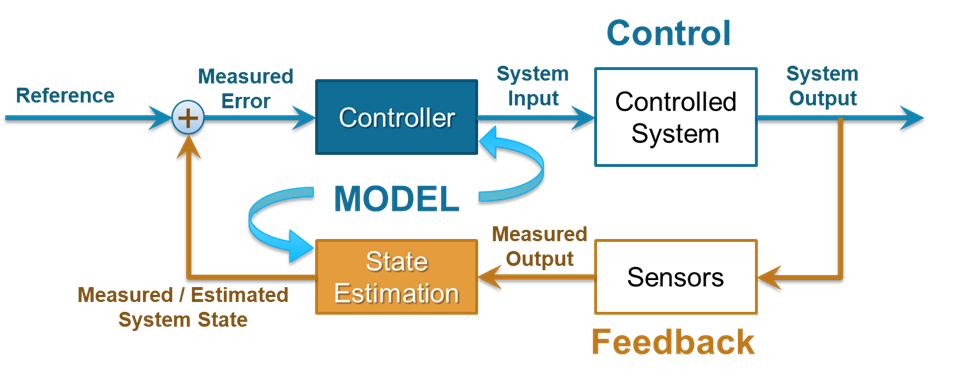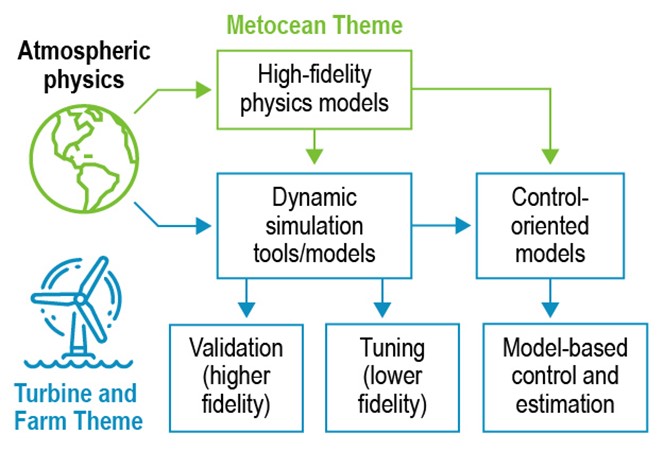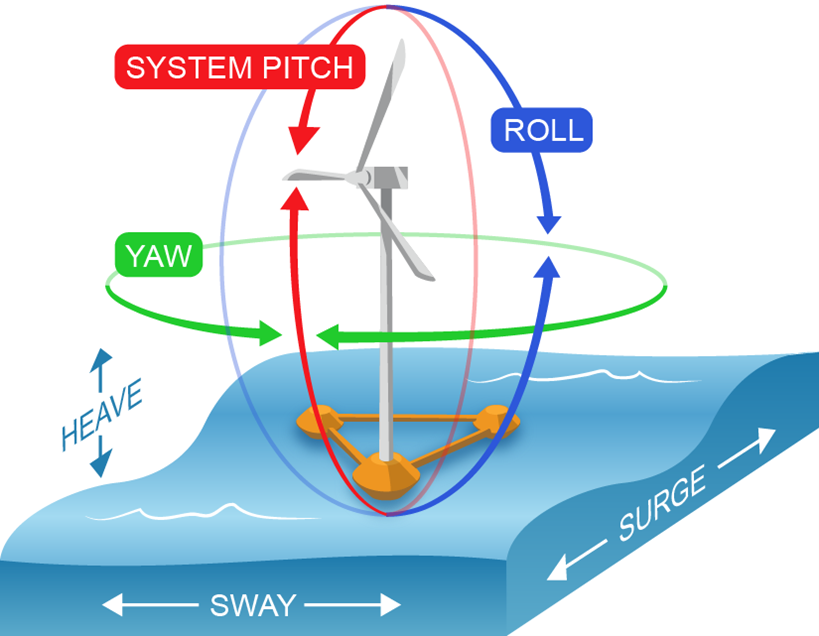Turbine and Farm Theme
Sonja Glavaski, Lead, and Kathryn Johnson, Co-Lead
Goal: Enable a reduction in levelized cost of wind energy through improved control of floating offshore wind turbines and wind farms in both the current and future metocean environment.
The Turbine and Farm theme focuses on developing more holistic modeling and control approaches to enable cost-effective, long-term operation of floating offshore wind turbines under a range of uncertainties and disturbances. The approach involves developing two categories of input-output models: dynamical simulation models and control-oriented models. The dynamical simulation models will represent the wind turbine and farm systems at high enough accuracy and will be used to develop and validate controllers. In general, feedback controllers use information that can be measured by sensors from a “system” to determine control action and calculate system inputs that will result in desired system performance. Combined, the Addressing Challenges in Energy: Floating Wind in a Changing Climate (ACE-FWICC) models represent a foundation for developing controllers that can achieve improved system operation objectives.

Efforts in this theme are split into two foci, one centered on individual wind turbines (inner-loop) and the other on full wind farms (outer-loop).

Inner-Loop Modeling and Control
The inner-loop refers to the floating offshore wind turbines themselves. Modeling and control development will focus on how to make the turbines more reliable and efficient across different environmental conditions that can affect their loading, damage, and energy output. Many current challenges with floating offshore wind turbines require better understanding, characterizing, and modeling of the interactions between the metocean, turbine, and platform. This work will explore both the whole system as well as individual and specific components within the system to identify points of strength and weakness and understand uncertainties while considering expected future climate changes.

Outer-Loop Modeling and Control
The outer-loop work centers on larger, farm-level assemblies of floating offshore wind turbines. This modeling and control development effort will examine ways to optimize farms to support energy production, reduce operational expenses, and lead to effective grid integration. The layout of wind farms can significantly affect turbine wakes and wind patterns, ultimately impacting energy production. These factors are further complicated in floating offshore wind farms by the combined metocean conditions and platform motion, leading to additional modeling needs. By accurately representing a broader range of factors, the ACE-FWICC team will be able to help more effectively design floating offshore wind farms by diminishing costs and robustly maximizing energy output in the face of climate change effects.